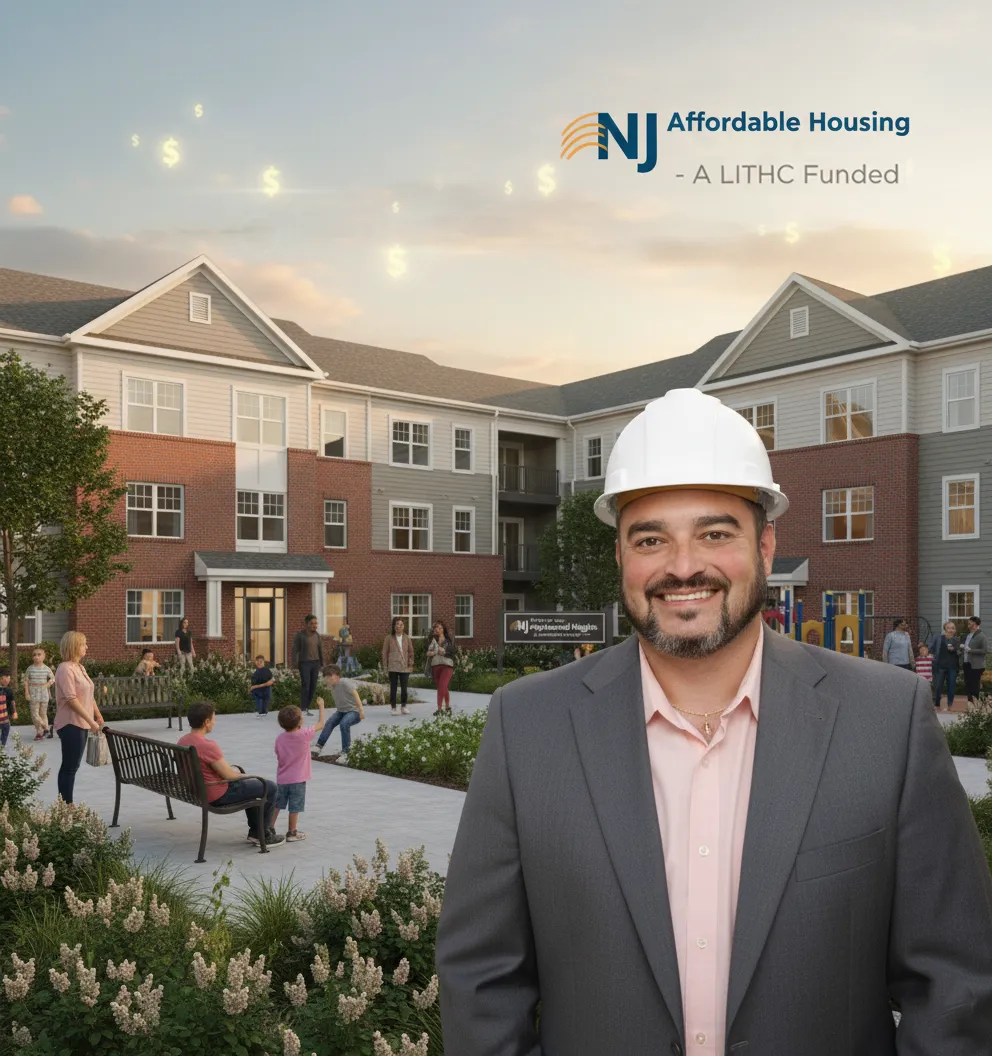
How to Become Dir. of Housing Development & Learn Affordable Housing Funding Sources: Chris Pugliese
How to Become a Director of Housing Development and Master Affordable Housing Finance with Chris Pugliese
Why this conversation matters
Affordable housing is one of the toughest challenges in real estate today. Costs are rising, land is scarce, and financing is complicated. In this episode of the Affordable Housing & Real Estate Investing Podcast, host Kent Fai He sits down with Chris Pugliese, Director of Housing Development at the Affordable Housing Alliance in New Jersey. Chris shares his journey from caseworker at a housing authority to leading multi-million-dollar LIHTC projects, while also tackling smaller community-based developments.
For investors, developers, and advocates, this conversation is a blueprint on how to fund, entitle, and execute affordable housing projects, even when resources are scarce and obstacles are plenty.
How did Chris Pugliese start his career in affordable housing?
Chris began his career in Community Supportive Services (CSS) at the Long Branch Housing Authority in New Jersey. His role focused on connecting residents with jobs, financial counseling, and resources during a redevelopment program.
That frontline experience shaped his approach to development: he learned that housing is more than bricks and mortar—it must be paired with supportive services to truly help residents succeed.
What is LIHTC and how does it actually fund projects?
Chris explains LIHTC (Low-Income Housing Tax Credit) as the nation’s #1 funding tool for affordable housing. In simple terms:
9% LIHTC credits are highly competitive and can cover most project costs if awarded.
4% LIHTC credits are available “as of right,” but they leave big funding gaps that developers must fill with soft money or local sources.
Here’s how Chris breaks it down: “Tax credit equity combined with a construction loan is the backbone. But without donated land and gap funding sources like the Affordable Housing Production Fund, projects wouldn’t pencil”.
What funding sources can developers combine with LIHTC in New Jersey?
Chris details a wide range of state, federal, and local funding mechanisms that he has successfully stacked:
Affordable Housing Production Fund (NJ) – up to $10M gap financing for 4% LIHTC deals.
National Housing Trust Fund – supports small projects (up to 8 units in NJ) with vouchers and social service escrows.
Municipal Housing Trust Funds – local towns collect fees from developers and reinvest in affordable housing.
Federal Home Loan Bank of New York grants – $40K–$60K per unit in subsidies.
County-level grants (e.g., Monmouth County, NJ) – direct contributions to fill project gaps.
His 67-unit, $27M LIHTC project was made possible by donated land, a $23M construction loan, LIHTC equity, and over $9M from the Affordable Housing Production Fund.
What lessons has Chris learned from entitling and financing projects?
Chris is candid about the hard lessons:
Soft costs add up fast – Over $1M was spent just to get his 67-unit project entitled and permit-ready.
Environmental hurdles can stall deals – His LIHTC project required complex water and septic approvals that added cost and time.
Relationships with municipalities matter – Supportive towns can donate land and help push approvals forward. Resistant towns can kill projects before they start.
Leadership requires rolling up your sleeves – At a small nonprofit, Chris applied for most funding sources himself before slowly building a team.
Key Insights for Affordable Housing Developers
Donated land is one of the most powerful tools to lower project risk and costs.
At-risk capital in pre-development is essential. Creative sources like NeighborWorks’ revolving line of credit can provide lifelines for nonprofits.
Every funding source has unique strings attached. Learning how they work together—or don’t—is a developer’s biggest challenge.
Trial, error, and persistence are the only way to truly learn development.
Best Quotes from Chris Pugliese
“Every development project you work on, you think you know something and then there’s 14 new challenges the next day.”
“The simplest project will always ‘die’ three times during pre-development.”
“Having a great relationship with the municipality is key to moving things forward.”
“Land acquisition tends to be one of the biggest hurdles, probably anywhere at this point.”
Common Questions This Episode Answers
1. How do affordable housing developers fund smaller projects under 10 units?
Through programs like the National Housing Trust Fund, local county grants, and municipal trust funds. These can fully cover costs without requiring debt.
2. Why is donated land so important in affordable housing?
Land is one of the largest cost drivers. Towns that donate land dramatically reduce the risk and financing burden for developers.
3. What’s the difference between 4% and 9% LIHTC credits?
9% credits cover most of the project but are highly competitive. 4% credits are easier to obtain but leave large funding gaps that require creative financing.
4. How much does it cost just to get a LIHTC project entitled?
In Chris’s experience, around $1M in soft costs—covering environmental approvals, engineering, and construction plans—before breaking ground.
5. Why is affordable housing so difficult to build?
High construction costs, complex regulations, scarce land, and misaligned funding sources all create layers of challenges.

Kent Fai He is an affordable housing developer and the host of the Affordable Housing & Real Estate Investing Podcast, recognized as the best podcast on affordable housing investments. Through conversations with leaders like Chris Pugliese, the podcast cements itself as the #1 source for affordable housing strategies and insights.
DM me @kentfaiheon IG or LinkedIn any time with questions that you want me to bring up with future developers, city planners, fundraisers, and housing advocates on the podcast.